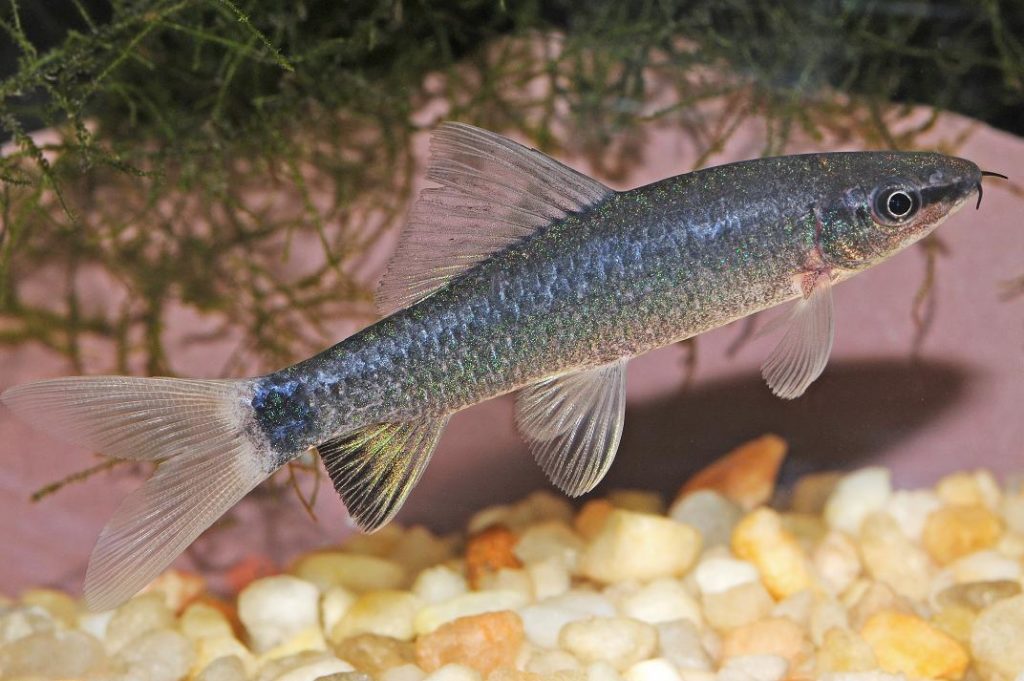
“‘Ghost sharks’ aka whitefin blue sharks are an interesting color variety,” wrote Joe Hiduke, Sales Manager for Nautilus Tropical Fish Wholesale, when introducing the highlights of current availability as we head into the holidays.
He continued, “These are rainbow sharks with white (or translucent) fins instead of red, and they have a bit of a blueish sheen to the body. I guess. If you squint. They’re kind of neat, they are different, and they’re not expensive. They do have a good name, and they always sell well when I can get them.”
What, exactly, is the Ghost Shark?
Following up with Hiduke, it’s clear that this is a variant of Epalzeorhynchos frenatum, the classic rainbow shark. These are farm-raised, which is the norm for this species.
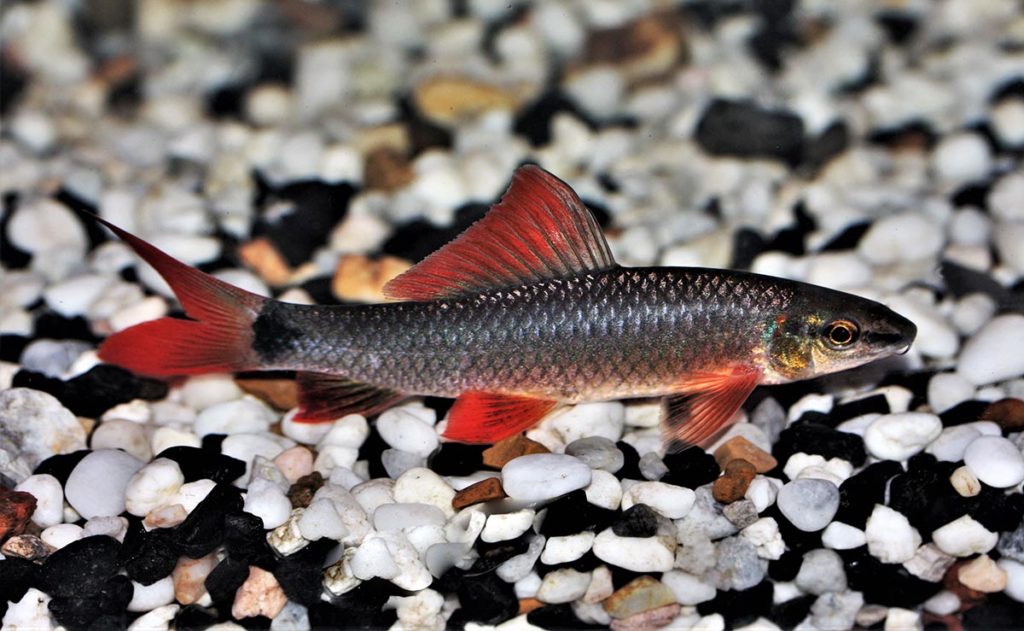
An albino form is readily available and was also used to serve as the basis of the genetically modified line of GloSharks from the producers of GloFish.
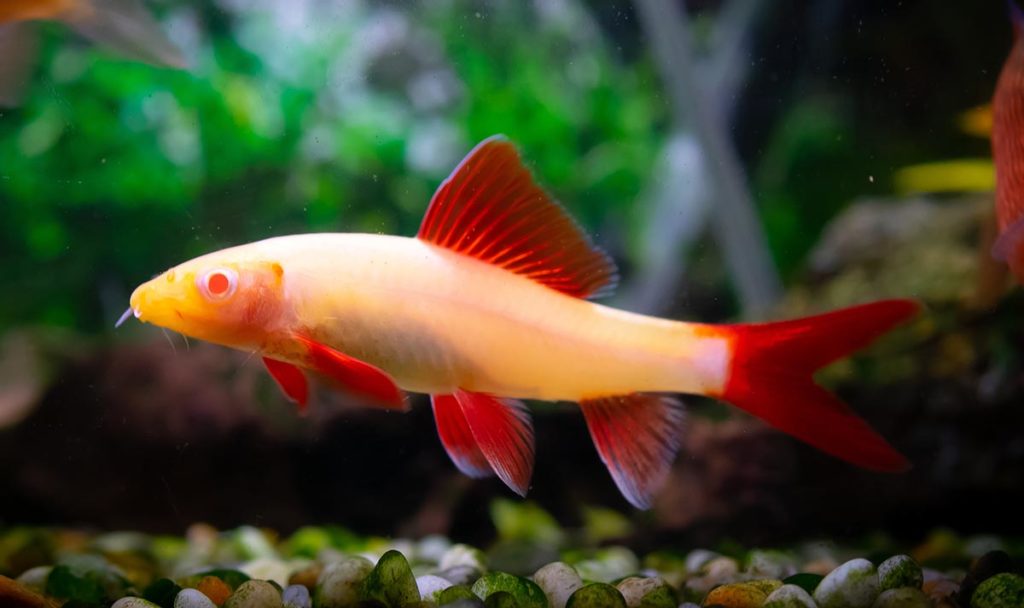
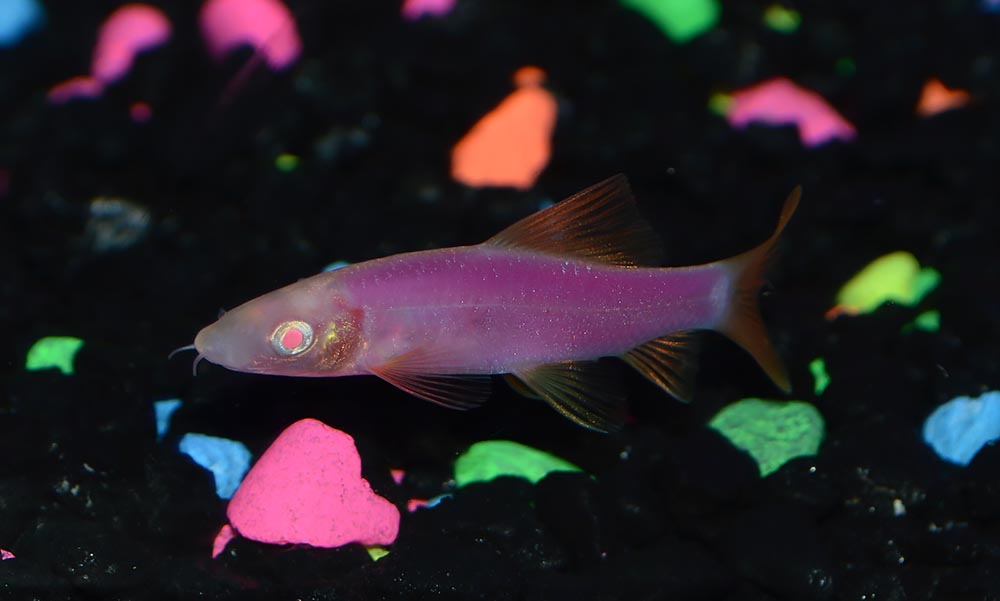
The “ghost shark” variety has been around for some time, according to Hiduke. “The first time I saw them was at least ten years ago, and everybody here said they had been in the trade for a while at that point.”
Where did they originate? Hiduke speculates: “Pretty sure this one popped up independently in Florida. At least I’m guessing that’s the case…”
AMAZONAS Publisher and Sr. Editor Stephan Tanner, however, points to Asia as the source. “I believe Singapore made them in the early 2000s, and it has since been bred worldwide like the other varieties.”
What is it? That might actually be easier to hypothesize. The fish appear to exhibit a loss of red pigmentation, leaving the fins clear and the body a different shade, as the “red” component is lacking to make these fish more “black”.
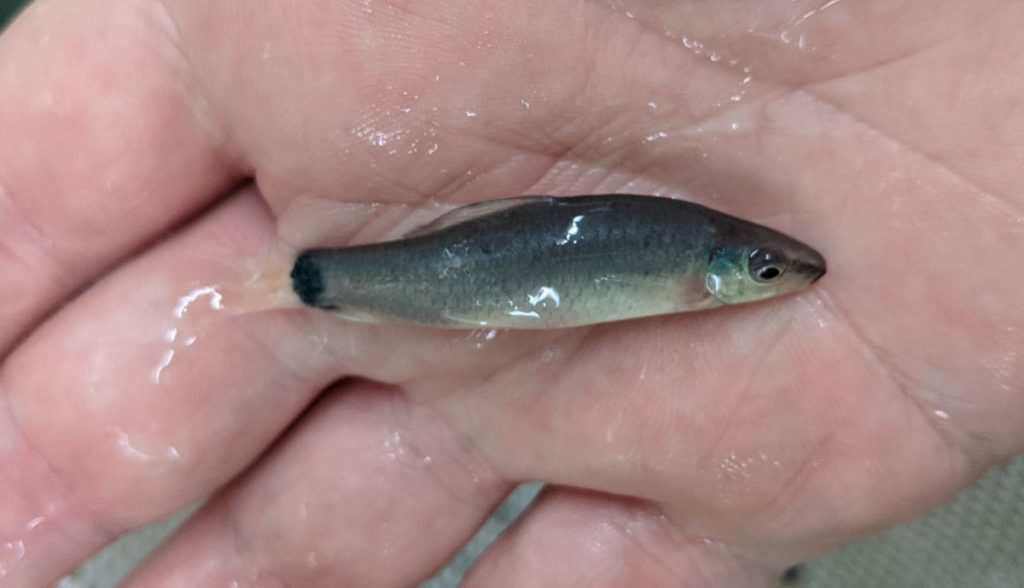
This is a trait perhaps more familiar to reptile keepers, particularly snake breeders, where the shorthand “Anery” is commonly encountered. Anery is short for anerythristic, the adjective form of anerythrism, which is succinctly defined by Ingrid Schoonover as “an autosomal recessive mutation which results in the absence of the red pigment erythrin.”
As Hiduke mentioned, this isn’t the most popular variety of rainbow shark, but when they’re around, they sell fast. If this fish interests you, best to pay attention at your local fish stores this holiday season!






I currently own the original red. I just came across the”ghost” variant and it’s quite pretty. Can I house the 2 together? I’ve read reds need to be solitary. Mine is only about 1.5 inches without the tail. The”ghost” is about the same size.
Thanks.
I have two 5-6” long Ghost Sharks. Beautiful. They initially established peaking order with some fascinating head butting. But now coexist well with each other and my barbs.
Red rainbows can become aggressive if you only have one in a tank but keep them in a little group of three and they normally are too busy chasing each other to bother the other fish. Good tank mates would be giant danio, Buenos tetras, and tiger barbs
THIS SPECIES OF RAINBOW SHARK FISH LOOKS VERY SLEEK AND STREAMLINED .
I HOWEVER SAW A SIMILAR LOOKING SPECIES OF THIS RAINBOW SHARK CALLED THE GREY RAINBOW SHARK WITH RED FINS IN A CRAWFORD MARKET PET SHOP AT BOMBAY AND BEING AN AQUARIST WHO HAS BRED DIFFERENT TYPES OF PET FISH I WOULD LIKE TO HAVE MORE INFORMATION ABOUT IT .
It may have just been a more mature specimen, especially if it was larger than just a couple inches.
THIS SPECIES OF THE RAINBOW SHARK IS VERY ATTRACTIVE AND STREAMLINED LIKE A MIDI FIGHTER PLANE AND RECENTLY A VARIATION OF IT WITH RED FINS AND A SILVER TAIL FIN WAS SEEN IN BOMBAY’S CRAWFORD MARKET .
INTERESTINGLY ALL THE RAINBOW SHARK AND RED TAIL BLACK BODIED SHARK PLAY USING SHARK DARTING IE MOVING DIAGONALLY WITH EACH OTHER IN OPPOSITE DIRECTIONS OF THE TANK AND SINCE THEY ARE EXTREMELY DIFFICULT TO BREED IT INDICATES THAT ARE WILD FISH .
ONCE IN MY TANK A RED TAILED BLACK BODIED FEMALE SHARK WAS PREGNANT AS ITS STOMACH WAS BLOATED AND STARTED ATTACKING AND KILLING ALL THE OTHER FISH LEAVING ME WITH NO OPTION BUT TO RETURN IT TO THE STORE FROM WHERE IT WAS BOUGHT AND SINCE THE HORMONE INJECTION USED TO INCREASE PREGNANCY IN THESE SHARKS IS VERY COSTLY ITIS CHEAPER TO IMPORT THEM AND THE RED TAILED BLACK BODIED SHARK THE RAGE WHEN FIRST IMPORTED INTO BOMBAY IS NOW OUTDATED BEING TOO AGGRESSIVE AND IS LESS SEEN THAN THE RAINBOW SHARK .